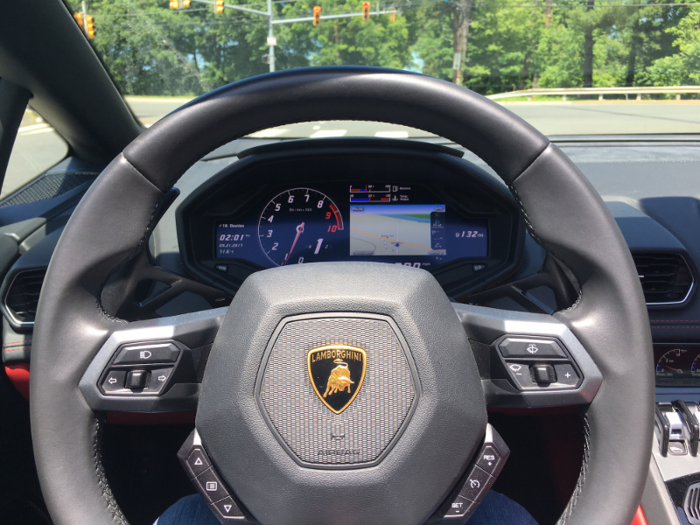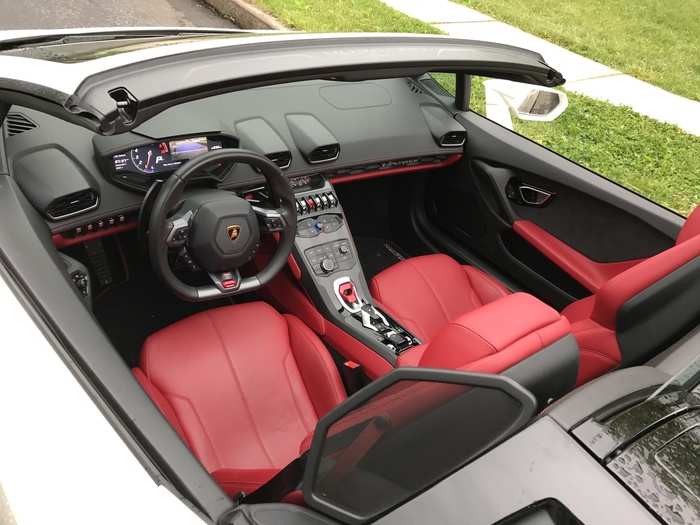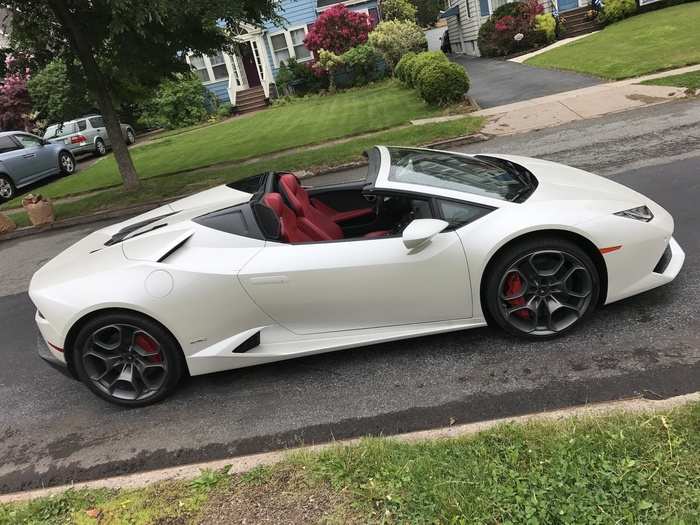The experience
On the road, the Huracan Spyder is superb. The heart of this beast is the naturally aspirated V10, shared with the Audi R8. As loud and enthusiastic as the motor is in the Audi, in the Lambo its dialed up to 11. There's an added level of raw power and emotion that simply doesn't exist in the Audi.
Best of all, there are no turbochargers around to disturb the velvety smooth power delivery of the V10 nor are they present to muffle the sweet music of the ten-cylinder symphony.
The twin-clutch gearbox pairs well with the broad powerband of the engine like the dry red and juicy steak.
Around the corners, the Huracan Spyder remains well behaved and composed even when pushed to its limits. The all-wheel-drive Lambo is so docile that my colleague Matt DeBord felt that this raging bull was simply not angry enough.
However, anyone looking to spend time sideways in a Lamborghini should take a look at the less powerful, but wilder rear-wheel-drive Huracan.
Retract the top and the Huracan Spyder takes it to a whole another level. With the air whizzing past you, the rumble of the V10 resonating behind your hear, and a kiss of sunshine on your forehead Lamborghini motoring en plein air is something to be experienced.
Raising the roof
Like its corporate cousin, the Audi R8 Spyder, the Huracan gets a tough canvas roof instead of a folding metal affair popular among high-priced drop tops these days. The top is available in three colors; black, brown, and red. Our test car came with the red top.
The electro-hydraulic roof can be raised and lowered in just 17 seconds at speeds up to 31 mph.
As with any convertible, the minute the roof is lopped off, chassis rigidity is compromised. Even with heavy-duty chassis reinforcements to make up for the missing roof, performance is lacking when compared to the coupe counterpart. The question is whether or not Lamborghini has done enough to overcome that. Well, I can honestly say, yes.
The carbon fiber and aluminum-intensive chassis feels rock solid. Lamborghini claims the Huracan Spyder's chassis is 40% stiffer than its predecessor, the Gallardo Spyder. Scuttle shake was nowhere to be found. Even on New Jersey's notoriously pot hole heavy roads.
("Scuttle shake" is annoying vibrations commonly exhibited by cars with lower chassis rigidity that experience too much flex.)
The Facts
The Lamborghini Huracan Spyder is powered by 5.2-liter, naturally aspirated V10 producing 602 horsepower. The Lambo gets all that power to the road through a seven-speed twin-clutch gearbox and an advanced all-wheel-drive system.
The Huracan is also available in rear-wheel-drive. However, that version gets a detuned 572 horsepower version of the same engine.
According to Lamborghini, the all-wheel-drive Huracan can hit 62 mph in a blistering 3.4 seconds and reach a top speed of 201 mph.
The Huracan Spyder starts at a shade over $262,000 with our option laden test car coming out to nearly $314,000.



